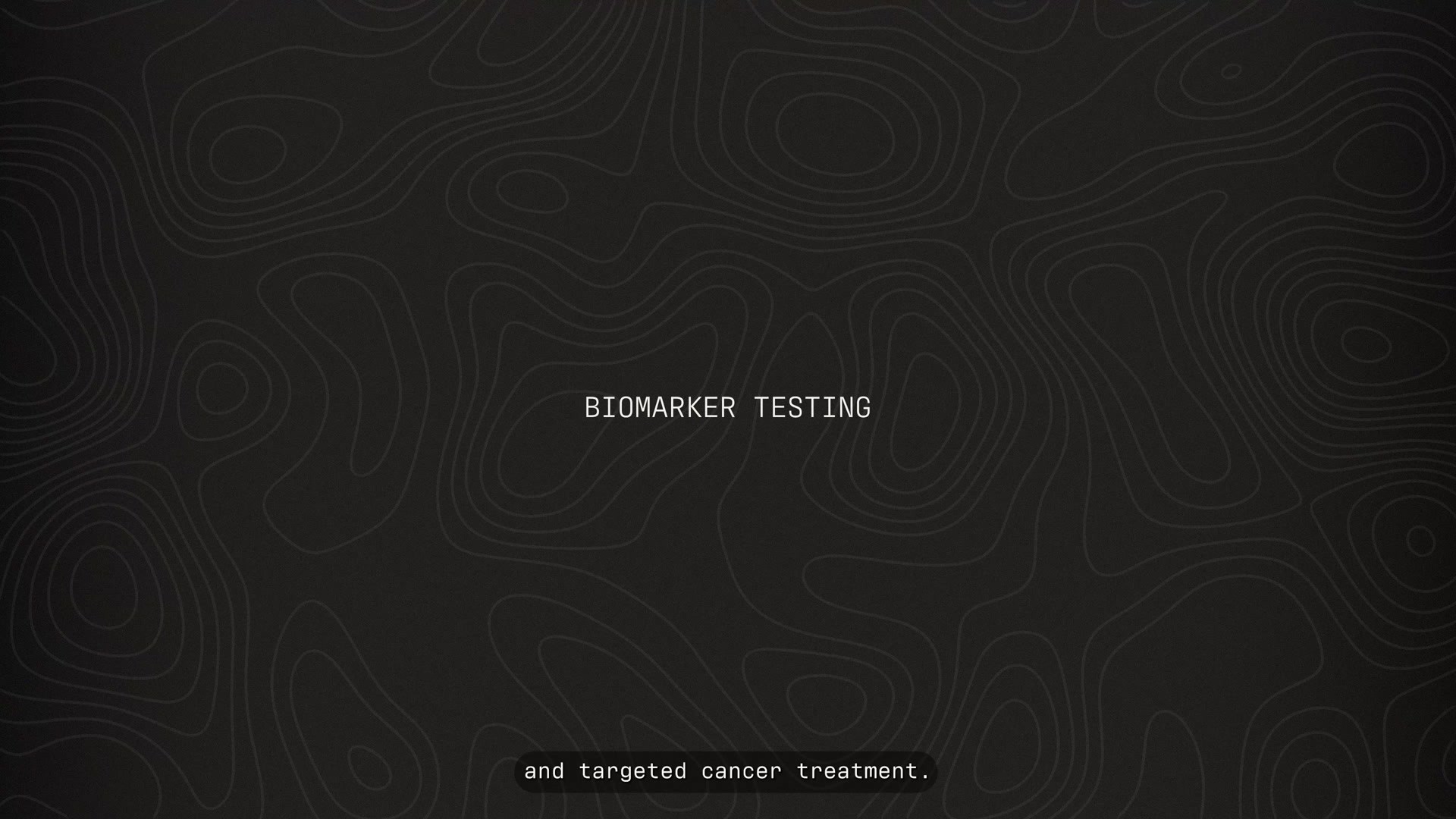Creative Data > Creative Data
MAPPING THE TUMOR 2.0
HAVAS LYNX, Manchester / ASTRAZENECA AND MERCK / 2024
Awards:

Overview
Credits
OVERVIEW
Why is this work relevant for Creative Data?
As every healthcare decision needs proof, there is no shortage of data. The abundance of information in daily practice, clinical trials and guidelines has saturated oncologists – causing task overload, putting lives at risk.
Precision medicine uses patients’ unique genomic data to pair them with lifesaving treatments. But overburdened oncologists’ ability to keep up with new data and rapid advancements are slowing its adoption.
Mapping the Tumor 2.0 took this huge amount of data, and succinctly encapsulated its essence in a single metaphor. We harnessed oncologists’ imaginations to clearly communicate to why testing early has the power to change everything.
Please provide any cultural context that would help the Jury understand any cultural, national or regional nuances applicable to this work.
In healthcare marketing, oncologists are traditionally thought to be deeply conservative data-driven people. If you ask them what will persuade them of a new treatment or option, they will ask to see “the data” – by which they mean the official dry clinical papers. The approach in Mapping the Tumor 2.0 represents a radical departure from conventional wisdom in medical education. And one that has counterintuitively proved very successful.
Background
Selecting the specific treatment for the genetics of a patient’s cancer saves lives, but almost half of US oncologists weren’t using biomarkers with new patients.
By 2022, 70% of clinical trials incorporated biomarkers to inform treatments, compared to 25% in 2005. We can now test patients to help decide what is "the right drug, for the right patient, at the right time”. This is called precision medicine.
By using a biomarker to find the right patients, they can live without disease for an average of 2.5 years.
However, 52% of oncologists still don’t fully utilize biomarker testing with new patients.
Our objective was to increase the belief in oncologists that early, comprehensive biomarker testing is an essential part of their toolkit, and fundamentally change their approach to treatment.
But these lifesaving messages were being lost in a deluge of other important information.
Describe the creative idea/data solution
Oncologists were disengaged and losing sense of why we use biomarker testing, relying on what they knew instead of seeking out new targetable biomarkers.
We helped them navigate through information overload by using a striking visual metaphor to better educate HCPs and encourage behavior change.
Like natural landscapes, tumors have unique profiles and characteristics which help define them.
Working with medical and scientific professionals, we crafted three distinct tumor maps for breast, prostate and ovarian. Key cancers for AstraZeneca that required testing for various biomarkers.
Each biological feature was reflected in the geographical ones that closely represented them. Genetic mutations were fault lines, as they form disruptions that effect the landscape. River deltas represented hormone receptors, feeding the landscape.
Describe the data driven strategy
We took the overwhelming amount of data behind precision medicine and early biomarker testing and distilled it down to the clarity of a single metaphor.
Our goal? To remind oncologists how biomarker awareness and testing can simply place the patient on a better path.
Precision medicine personalizes treatment for patients with key genomic biomarkers, greatly improving their outcomes. Oncologists focus on trying to keep up to date on every advancement but overlook the simple knowledge of biomarker testing.
This means many eligible patients go untested and unidentified every year.
In breast cancer, 13,103 (44%) of eligible patients are missed every year.
In ovarian cancer, 5,322 (54%) of eligible patients are missed every year.
In prostate cancer, 19,893 (46%) of eligible patients are missed every year.
These overlooked patients missed a combined 230,650 months of better life that precision medicine could have provided them.
Describe the creative use of data, or how the data enhanced the creative output
Mapping the Tumor took an overwhelming amount of data and distilled it into the simple, narrative metaphor that visually communicated the value of biomarker testing clearly. Removing the need for oncologists to read over 178 articles a day, just to keep up to date.
Because of the sheer volume and complexity of data behind precision medicine, we needed oncologists to recognize the importance of being aware of the significance of certain biomarkers and how to test for them.
When we talked to them, they made it clear they preferred a simple metaphorical execution when it came to distilling complex information.
Using genomic data that supported precision medicine, we worked with medical and scientific teams to craft three distinct tumor maps. Each genomic feature, such as mutations, were reflected by their natural, geographical counterpart – fault lines, for example.
List the data driven results
As a result of the campaign, 22,607 patients were identified through biomarkers as being treatable through life saving precision medicine
Impact was measured through change in testing rates of key biomarkers across breast, ovarian and prostate cancer.
Supported by strong campaign metrics:
11.63% email CTR (5x benchmark)
41% congress attendees engaged with the booth (industry benchmark 15%)
700+ downloads of supporting education.
In 3 months, 5,363 oncologists engaged with the microsite - responsible for half of new patients.
3x faster than previous campaigns with traditional approaches.
We contributed to a 25% absolute increase in “intention to test for key biomarkers to inform treatment in the future”.
In testing there was an increase of 41% and a significant reduction in testing gap - identifying 22,607 more patients with treatable biomarkers.
Resulting in the potential of a staggering 7,881 years of life preserved.
More Entries from Data Visualisation in Creative Data
24 items
More Entries from HAVAS LYNX
24 items




